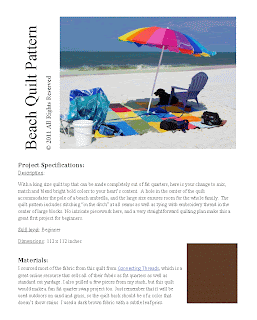How is it possible that I made this bag, wrote up the pattern and began selling it in July 2010, yet somehow never blogged about it? You’ve got me. I’m forgetful that way.
I designed this bag for a beginners Learn to Crochet class. Back in the day when all young girls were taught needlework, samplers where work projects used to practice various techniques such as a cross-stitch sampler. Hence the name. The project teaches the elements of crochet, including several basic stitches such as Single Crochet, Half Double Crochet and Double Crochet, as well as Seed Stitch, Rib Stitch and a couple of Post Stitches (Basketweave and Tall Cables).
If you already know how to crochet and have mastered basic chains, single and double crochet and finishing off, the fancier stitches are quite simple. Do you know them?
Seed stitch is one of the easiest:
Chain a multiple of 2 stitches +1.
Row 1 – ch 1. *sc in st, sk next st, chain 1” across ending with sc.
Row 2 – turn. chain 1. *ch 1, sk sc, sc in ch* across, ending with ch 1.
Repeat rows 1 and 2.
This pattern can also be worked in hdc, dc or tr
Rib stitch isn’t difficult either:
Chain a multiple of 1.
Row 1 – turn. chain 1. Sc in back loop only across.
Repeat row 1.
This pattern can also be worked in dc.
Post stitches are a bit more challenging, but easy once you get the hang of it. These special stitches are worked around the post of the stitch in the previous row to create texture and interest in the work. To do this you insert your hook on one side of the post and come out on the other, then yarn over and pull a loop back around the post. You will either be working from front to back to front (called front post double crochet but worked behind the post) or back to front to back (in front of the post).
The front post double crochet (fpdc) is worked as follows:
Yarn over (YO) and insert hook from the front, around the post coming out again at the front. Yarn over again and draw up the loop. Now complete the double crochet as usual. That is YO, draw through two stitches. YO and draw through last two stitches.
For the back post double crochet (bpdc):
YO. Insert the hook from the back, around the post, coming out again at the back. YO and draw up a loop in the back of the work and complete the stitch as normal.
To make the basket weave pattern you simply chain a minimum of 6 stitches then a multiple of 3 stitches +2.
Row 1 – turn. ch 2. dc across.
Row 2 – turn. ch 2. hdc, *3 fpdcs, 3 bpdc; repeat from * to * across, ending with hdc.
Row 3 – turn. ch 2. Hdc, *3 fpdc, 3 bpdc*; repeat from * to * across, ending with hdc.
Row 4: same as row 3.
Row 5: same as row 2.
Repeat rows 2 – 5.
The cable stitch is a bit awkward, but again, once you get the hang of it, pretty easy.
Chain a multiple of 6 stitches +1.
All even rows: turn. ch1. sc across.
Row 1 – turn . ch 1. sc across.
Row 3 – turn ch 1. 2 sc *fpdc around sc 2 rows below, sk sc behind fpdc, sc, fpdc around sc 2 rows below, sk sc behind fpdc, 3 sc*. Repeat from * to * ending with 2 scs.
Row 5 – turn. ch 1. 2 sc, fpdc around fpdc and 2 rows below, sk sc behind fpdc, sc, fpdc around fpdc 2 rows below, sk sc behind fpdc, 3 sk*. Repeat from * to * ending with 2 sc.
Row 7 – turn. ch 1. 2 sc, *fpdc around sc 2 stitches forward and 2 rows below, sk sc behind fpdc, sc, fpdc around sc 2 stitches back and two rows below), sk sc behind fpdc, 3 sc*. Repeat from * to * ending with 2 sc.
Row 9 – turn. ch 1. 2 sc *fpde around fpdc 2 rows below, sc sc behind fpdc, sc, fpdc around fpdc 2 rows below, sk sc behind fpdc, 3 sc*. Repeat from * to * ending with 2 sc.
Repeat rows 4 – 9.
The bag is made up of one block of each of the seven stitch patterns in each of three colors.
I made it up in these bright Rowan Handknit cottons because I already had the pink and I thought it would be fun to add a couple more colors to make it summery and bright. Then I found this adorable retro fabric for a lining. The fabric so reminded me of all those cute mommy and me patterns from McCall’s back in the 50s and 60s.
What’s my favorite thing about this bag? You can roll it up and throw it in your vacation suitcase. When you are ready to pack to come home, you have an extra carry on for all your souvenirs or those precious shells you gathered every morning on the beach. Want to make one for yourself? Find the full pattern
here.
















































